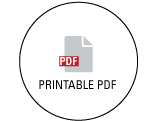Anna Goc, Aleksandra Niedzwiecki, Matthias Rath
Journal of Applied Microbiology 2015, 119: 1561-1572
Abstract:
AIMS: Little is known about the effects of phytochemicals against Borrelia sp. causing Lyme disease. Current therapeutic approach to this disease is limited to antibiotics. This study examined the anti-borreliaea efficacy of several plant-derived compounds and micronutrients. METHODS AND RESULTS: We tested the efficacy of 15 phytochemicals and micronutrients against three morphological forms of Borrelia burgdoferi and Borrelia garinii: spirochetes, latent rounded forms and biofilm. The results showed that the most potent substances against the spirochete and rounded forms of Borrelia burgdorferi and Borrelia garinii were cis-2-decenoic acid, baicalein, monolaurin, and kelp (iodine); whereas, only baicalein and monolaurin revealed significant activity against the biofilm. Moreover, cis-2-decenoic acid, baicalein, and monolaurin did not cause statistically significant cytotoxicity to human HepG2 cells up to 125 μg ml-1 , and kelp up to 20 μg ml-1 .
CONCLUSIONS: The most effective antimicrobial compounds against all morphological forms of the two tested Borrelia sp. were baicalein and monolaurin. This might indicate that the presence of fatty acid and phenyl groups is important for comprehensive antibacterial activity. SIGNIFICANCE AND IMPACT OF THE STUDY: This study reveals the potential of phytochemicals as an important tool in the fight against the species of Borrelia causing Lyme diseases.
This article is protected by copyright. All rights reserved.
Key Words:
Borrelia sp., biofilm, cysts, spirochetes, phytochemicals, Lyme disease, Borrelia burgdorferi
Full Study:
